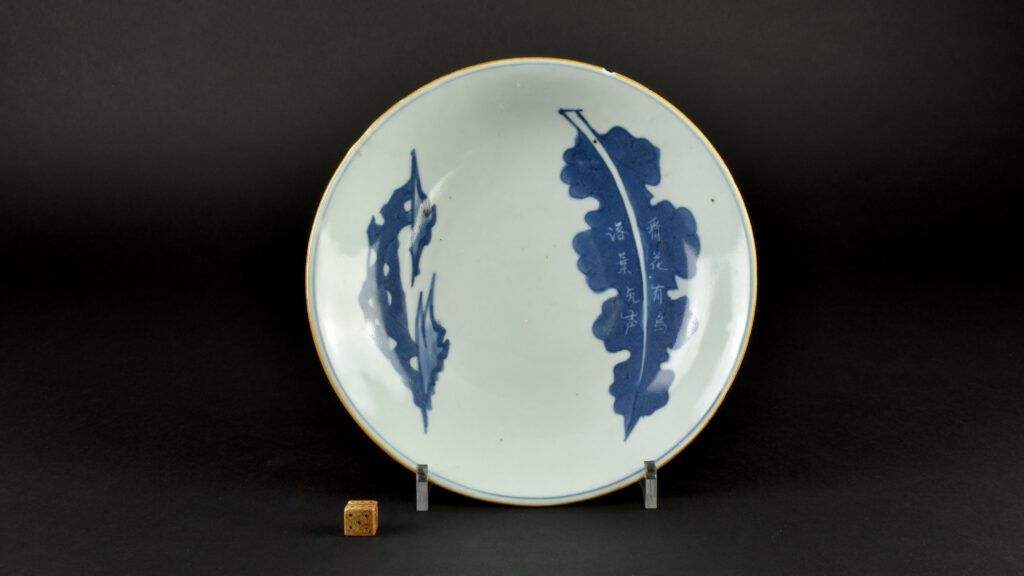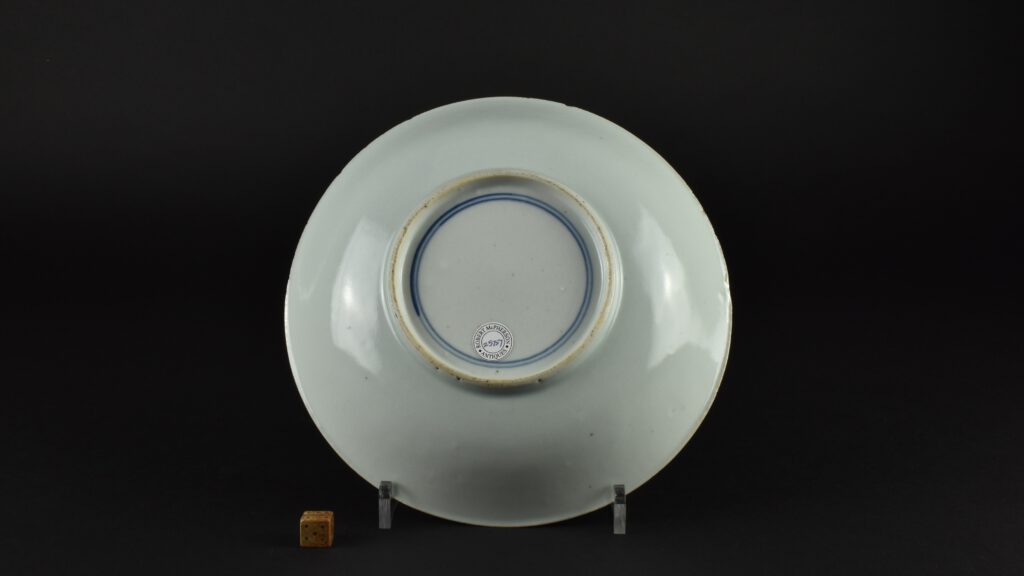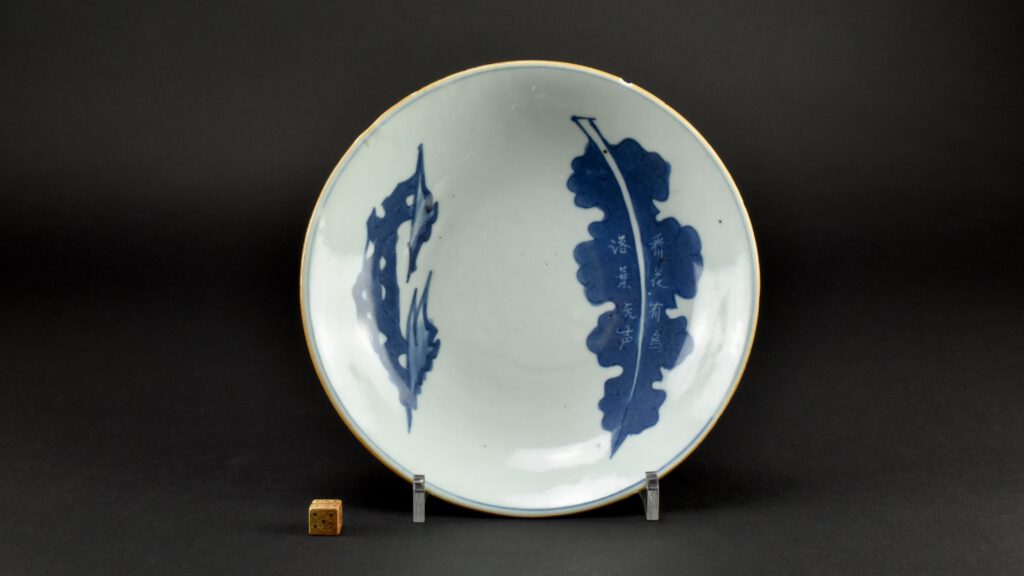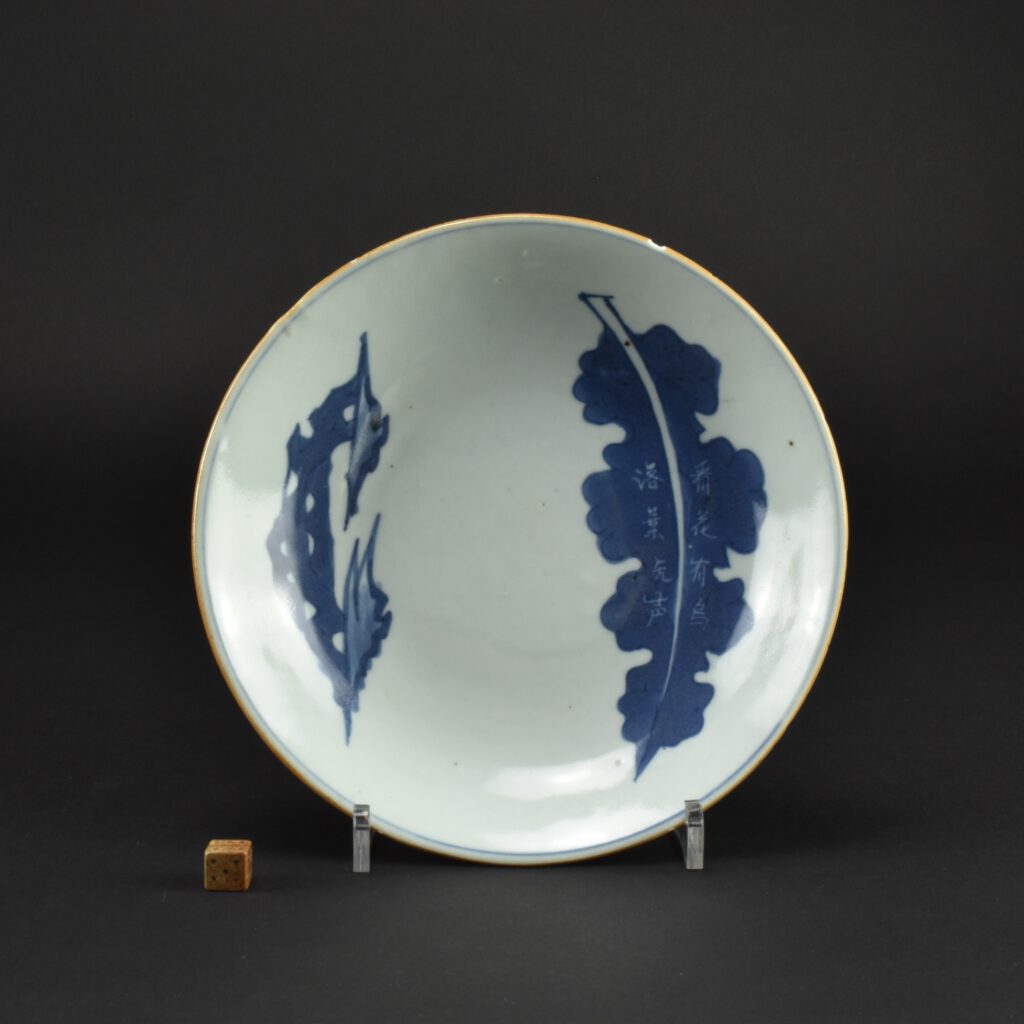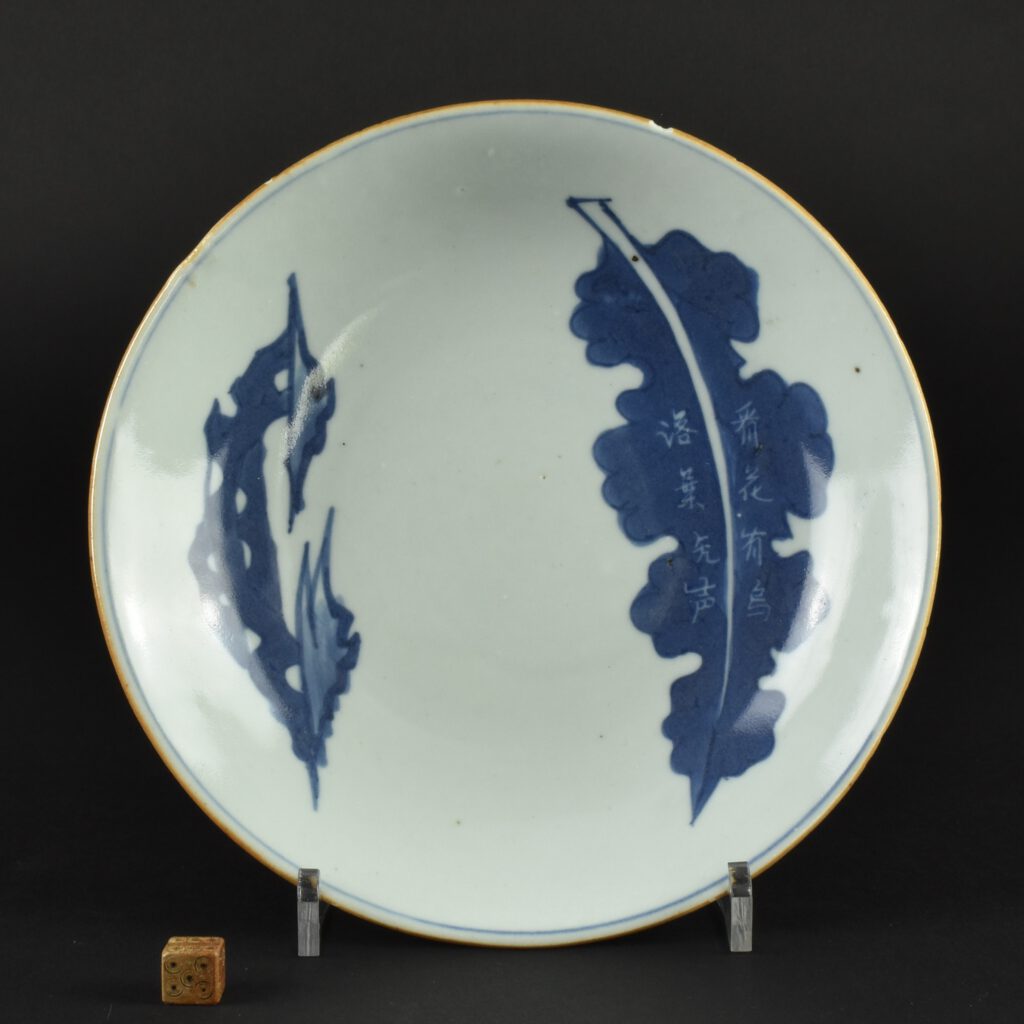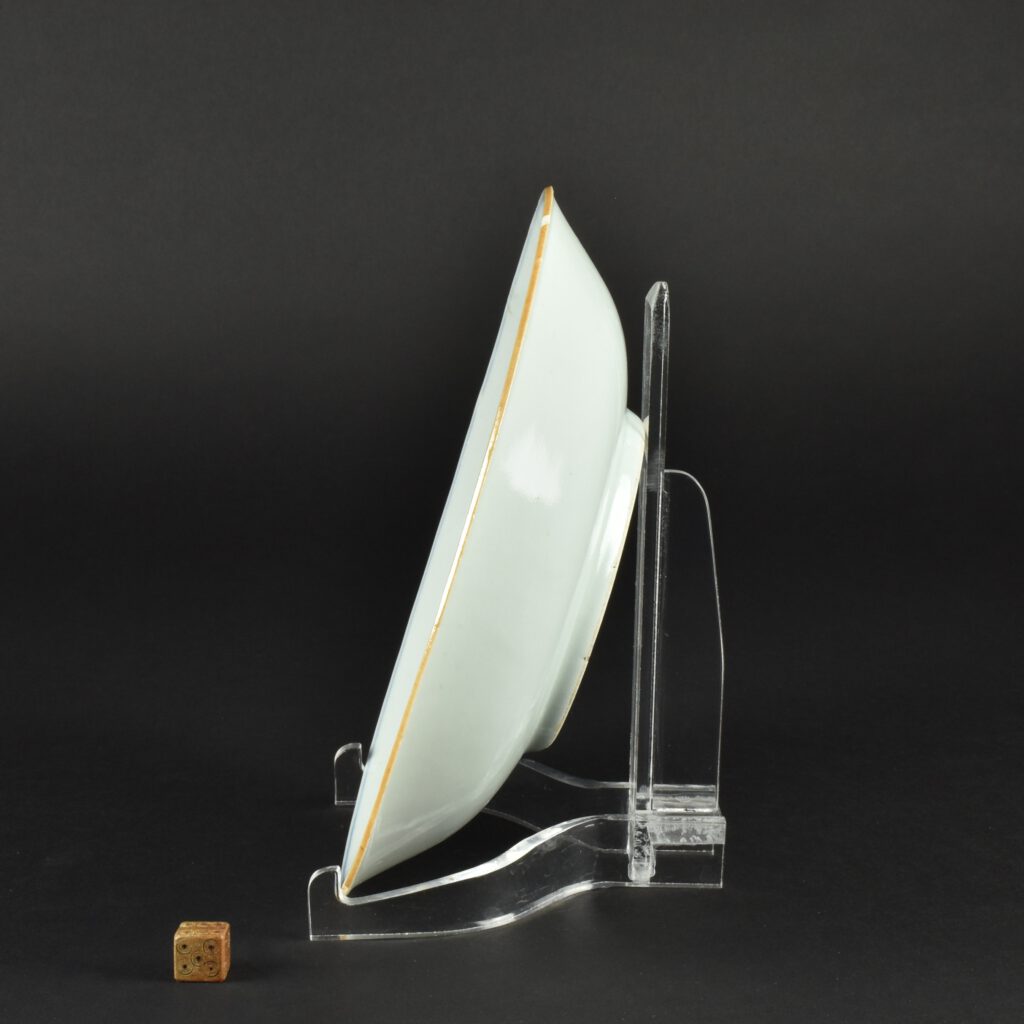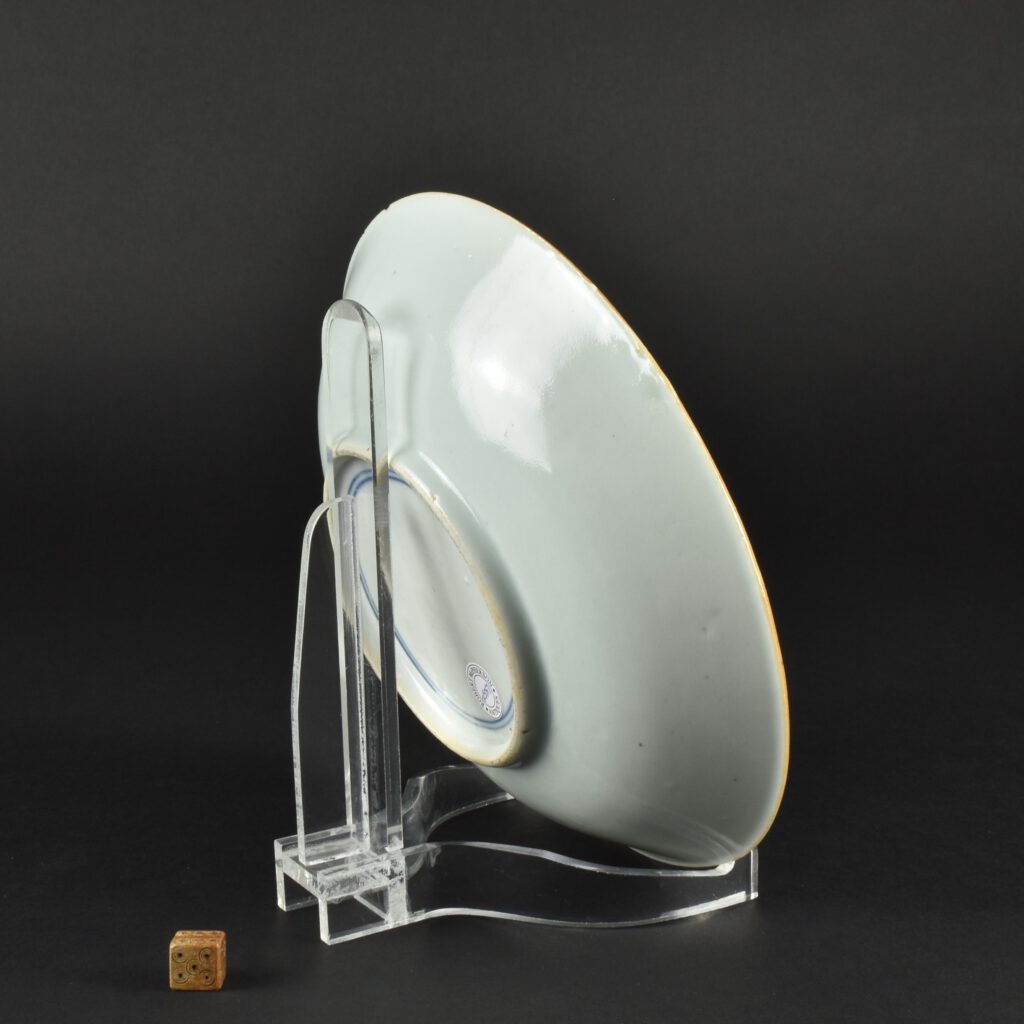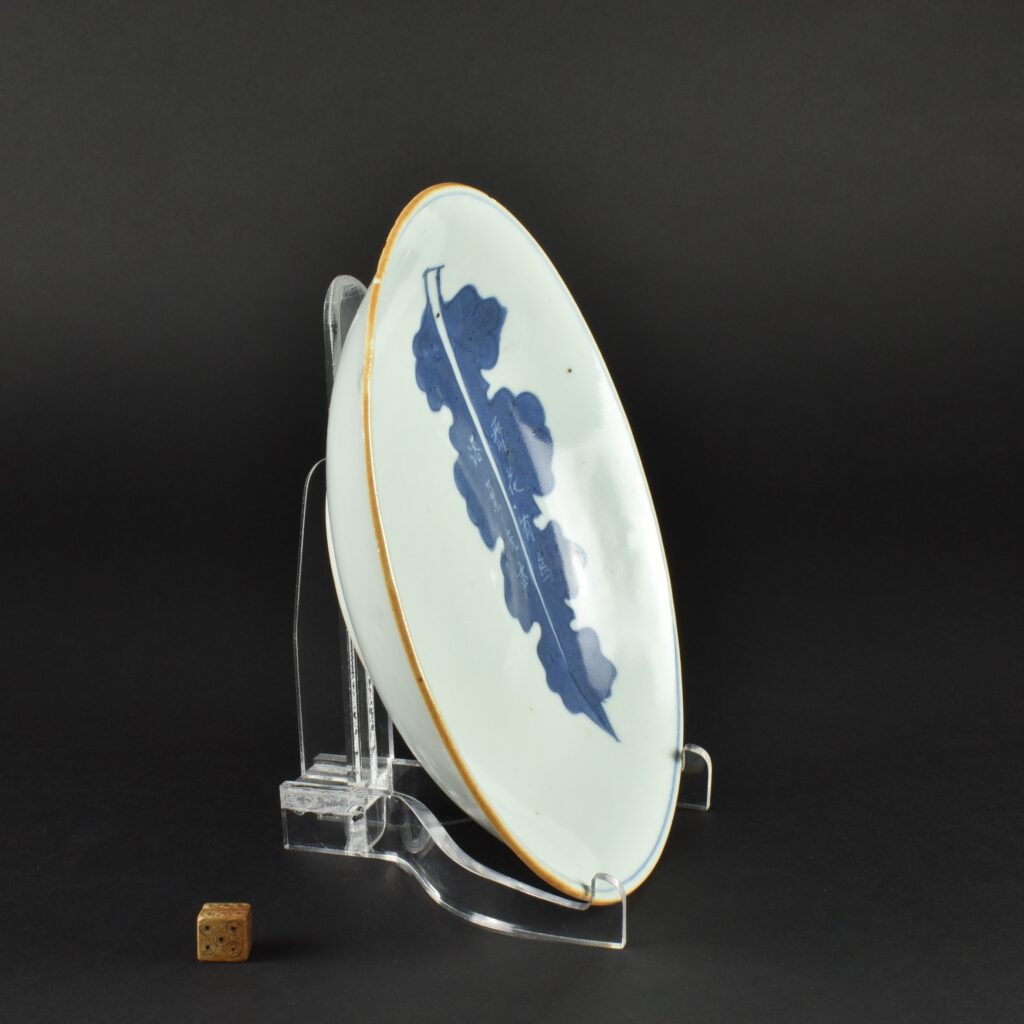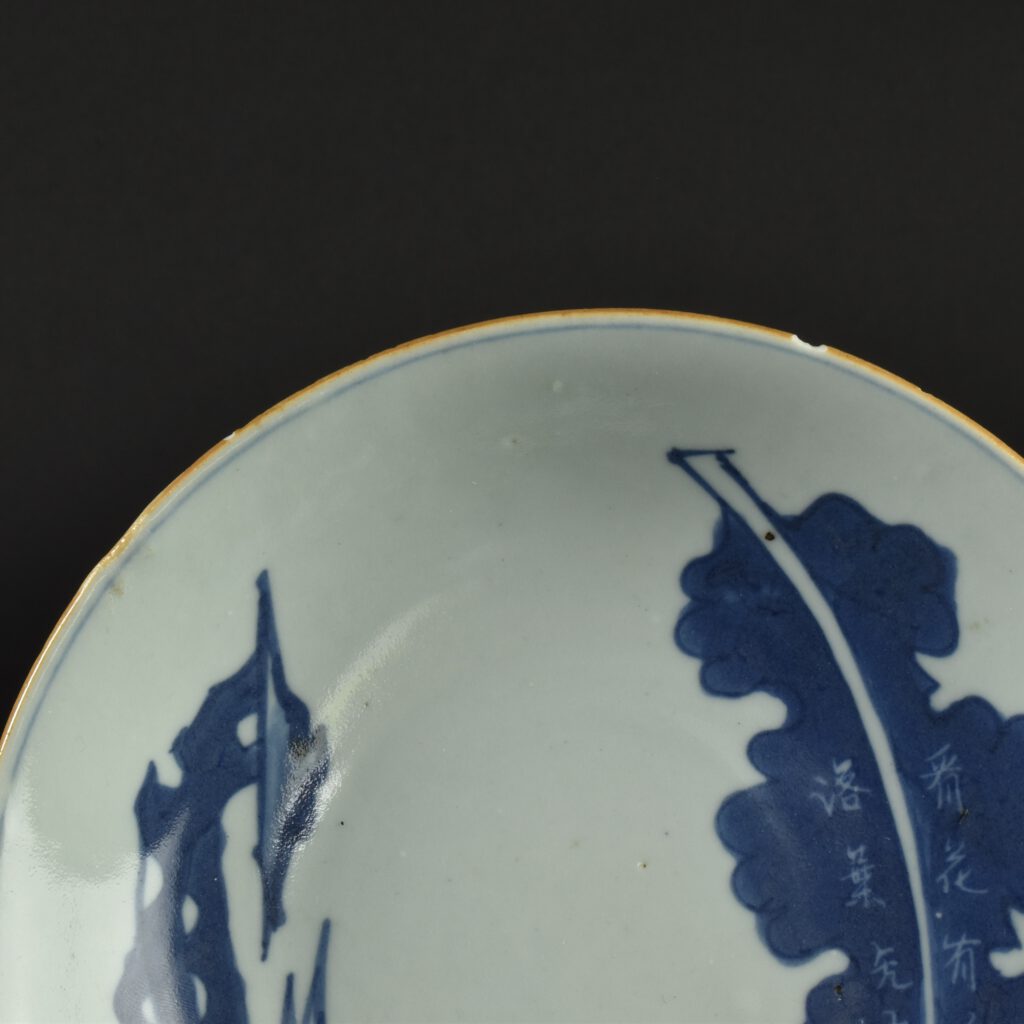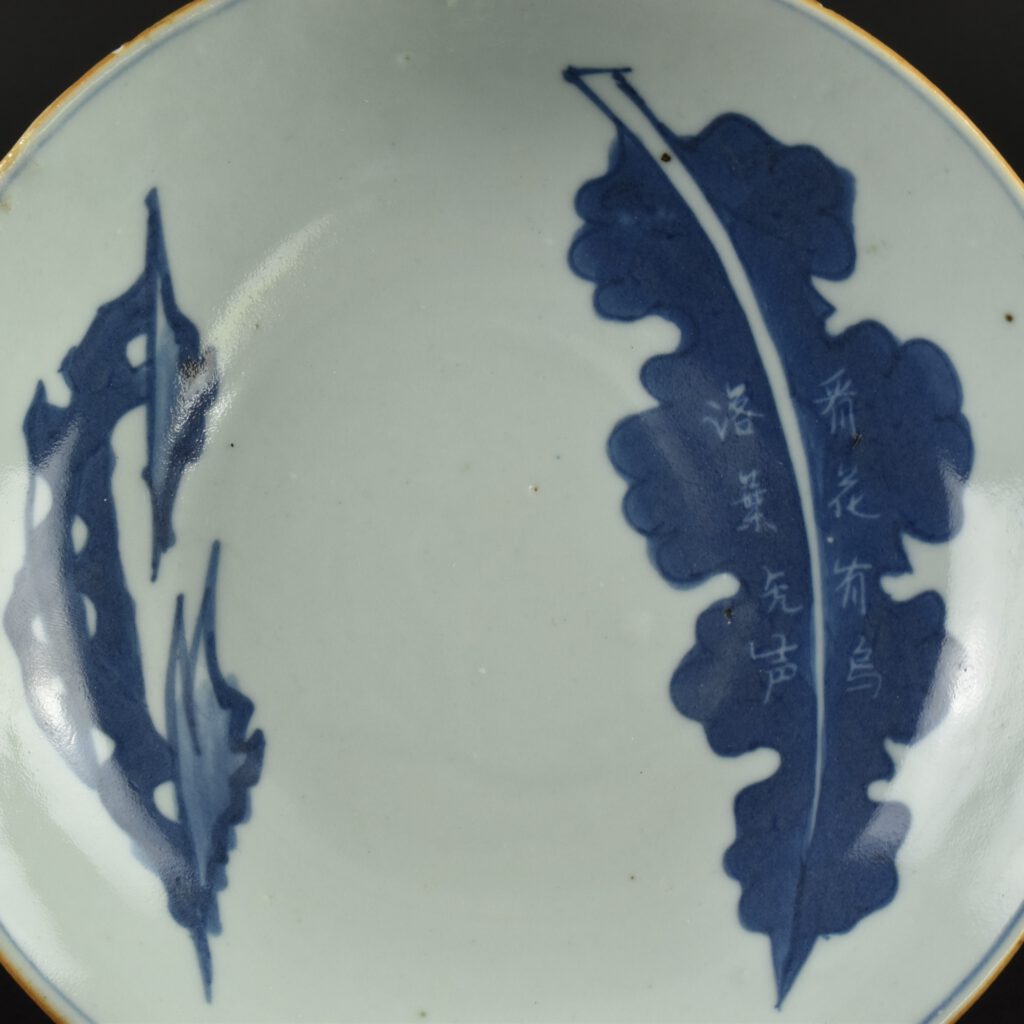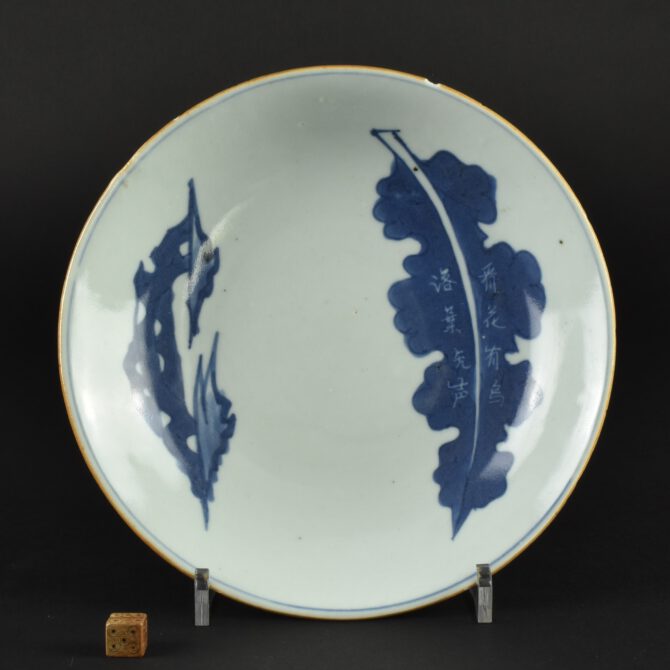
Transitional Porcelain Poem Dish Shunzhi or Early Kangxi Period
A 17th Century Chinese Blue and White Porcelain Saucer Shaped Dish, Shunzhi or Early Kangxi c.1650 – 1670, Jingdezhen Kilns. The poem on this dish has been translated for me ; Always a flower with bird chirping, while silence goes with fallen leaves (thank you to S.N.). Poem dishes of this type, painted with a leaf next to a taihu rock were made during the reign of Shunzhi (1644-1661), with variations carrying on until the early Kangxi period c.1662 to 1670. See below for a Kangxi dish we sold some years ago that came from Marchant & Son, which is dated 1667. A number of these later smaller dishes are known, another dated 1667 is in the Butler Collection (see references). The present example is closer to, but not the same as the two from the Butler Collection, dated to Shuzhi (see references). A considerable numbers of these dishes are in the Palace Museum in Beijing, suggesting they were made for the domestic market, an early example is in the Palace Museum examples, dated to 1648. Indeed, they do not seem to appear in early European collections. The leaves vary from dish to dish, clearly representing different tree species. A second example, in the Butler Collection (III.3.35), specifically mentions a Wutong leaf in the poem. The inscribed poems on these dishes were done by using a wax resist technique. The cobalt pigment would not adhere to the wax characters, it would be burnt off during the firing after glazing leave the white characters we see today. Dishes of this type with designs with poems and symbolism must have appealed to the Scholar class in China. As with other Shuzhi porcelain of this type the glaze has a distinct blue green tinge.
SOLD
- Condition
- One small rim chip. Some unevenness to the rim.
- Size
- Diameter : 19.9 cm (8 inches)
- Provenance
- N/A
- Stock number
- 25757
- References
- For two dishes of this type dated to the Shuzhi period (1644-1661) see : Leaping The Dragon Gate, The Sir Michael Butler Collection of Seventeenth Century Chinese Porcelain (Teresa Camepa and Katherine Butler, Ad ILissvm. 2021. ISBN 978-1-912168-16-3) Page 287, III.3.34 and III.3.35. For a similar slightly later version, Kangxi blue and white porcelain dish dated 1667, from the Butler Family Collection (collection number F22) see : Seventeenth Century Jingdezhen Porcelain from the Shanghai Museum and the Butler Collection.
Information
A Related Dated Transitional Dish, Early Kangxi Period 1667
R & G McPHERSON ANTIQUES ‘SUMMER EXHIBITION’
Including Chinese and Japanese Ceramics from The John Drew Collection Part II.
KANGXI 1667
A Rare Dated Early Kangxi Blue and White Porcelain Dish in the Chinese Taste, 1667.
The base dated 1667, the poem next to the leaf on the front reads ‘When this leaf falls everyone knows the autumn season is coming’.
For a very similar Kangxi blue and white porcelain dish also dated 1667 from the Butler Family Collection (collection number F22) see : Seventeenth Century Jingdezhen Porcelain from the Shanghai Museum and the Butler Collection (Shanghi Museum,2006. ISBN 1-85759-417-7) page 35 fig 6 ; We would like to thank Mr S. Balmer for drawing our attention to this reference.
Provenance :
S.Marchant & Son.
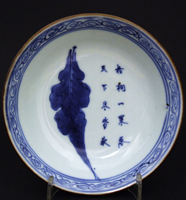
R&G McPherson Antiques
A Similar Cruder Transitional Porcelain Dish
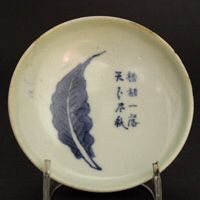
The Transitional Period c.1620 - 1680
The roots of this unsettled period starts during the later part of Wanli`s reign (1573-1620). At the begging of his reign China was doing very well, new crops from the Americas such as peanuts, maize and sweet potatoes increased food production, while simplified taxes helped the state run smoothly. But this was not due to Wanli`s enlightened reign, but to his Mother championing a man that was to become the Ming dynasties most able minister, Zhang Zhuzheng (1525—1583). Wanli became resentful of Zhuzheng`s control but upon his death became withdrawn from court life. Between 1589 to 1615 he didn`t appear at imperial audiences, leaving a power vacuum that was filled by squabbling ministers. Mongols from the North raided as Japan invaded Korea. Wanli re-opened the silver mines and imposed new taxes but the money was lost due to corruption, as well as being frittered away by the indulgent Emperor himself . The next emperor of Ming China, Tianqi (1621-1627), was bought up in this self indulgent disorganised environment, at the very young age 15 his short reign started. He didn`t stand a chance. Tianqi made the mistake of entrusting eunuch Wei Zhongxian (1568-1627) who Anna Paludan in her excellent book “Chronicle of the Chinese Emperors” (Thames and Hudson, 1998) describes as “a gangster of the first order”. Tianqi was deemed to have lost the Mandate of heaven by the Ming people. Tianqi`s younger brother, the last of the Ming Emperors, Chongzhen (1628-1644), was not able to save the situation. The systems of administration had broken down, corruption was rife and so when a sever famine broke out in 1628 nothing much could be done. Anna Paludan describes the tragic end to the great Ming Dynasty “The final drama was worthy of a Greek tragedy. The emperor called a last council in which `all were silent and many wept`, the imperial troops fled or surrendered, and the emperor, after helping his two sons escape in disguise, got drunk and rushed through the palace ordering the women to kill themselves. The empress and Tianqi`s widow committed suicide; the emperor hacked off the arm of one daughter before killing her sister and the concubines. At dawn he laid his dragon robe aside and dressed in purple and yellow, with one foot bare, climbed the hill behind the now silent palace and hanged himself on a locust tree”. The Great Wall of China, started 2,000 years ago was built to protect China from the Northern barbarian hoards, it was often tested and sometimes failed. The Jin people invaded China, ruling the North between 1115 and 1234, it was their descendants the Manchus, Jurchens from south east Manchuria that took full advantage of the problems of the Ming dynasty. In 1636 they adopted a Chinese dynastic name, the `Great Qing` (Qing meaning pure). The first of the Qing emperors was Shunzhi (1644-1661) but for most of his reign his uncle ran the state. War raged on during this period and it wasn`t until the second Qing emperor Kangxi (1662-1722) that true peace was achieved. Kangxi was a wise and educated man, he became a highly successful emperor bringing China a long period of wealth and stability.
